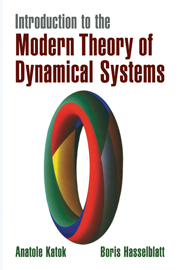Book contents
- Frontmatter
- Contents
- PREFACE
- 0 INTRODUCTION
- Part 1 Examples and fundamental concepts
- Part 2 Local analysis and orbit growth
- Part 3 Low-dimensional phenomena
- 10 INTRODUCTION: WHAT IS LOW-DIMENSIONAL DYNAMICS?
- 11 HOMEOMORPHISMS OF THE CIRCLE
- 12 CIRCLE DIFFEOMORPHISMS
- 13 TWIST MAPS
- 14 FLOWS ON SURFACES AND RELATED DYNAMICAL SYSTEMS
- 15 CONTINUOUS MAPS OF THE INTERVAL
- 16 SMOOTH MAPS OF THE INTERVAL
- Part 4 Hyperbolic dynamical systems
- Appendix: BACKGROUND MATERIAL
- NOTES
- HINTS AND ANSWERS TO THE EXERCISES
- REFERENCES
- INDEX
14 - FLOWS ON SURFACES AND RELATED DYNAMICAL SYSTEMS
Published online by Cambridge University Press: 05 June 2012
- Frontmatter
- Contents
- PREFACE
- 0 INTRODUCTION
- Part 1 Examples and fundamental concepts
- Part 2 Local analysis and orbit growth
- Part 3 Low-dimensional phenomena
- 10 INTRODUCTION: WHAT IS LOW-DIMENSIONAL DYNAMICS?
- 11 HOMEOMORPHISMS OF THE CIRCLE
- 12 CIRCLE DIFFEOMORPHISMS
- 13 TWIST MAPS
- 14 FLOWS ON SURFACES AND RELATED DYNAMICAL SYSTEMS
- 15 CONTINUOUS MAPS OF THE INTERVAL
- 16 SMOOTH MAPS OF THE INTERVAL
- Part 4 Hyperbolic dynamical systems
- Appendix: BACKGROUND MATERIAL
- NOTES
- HINTS AND ANSWERS TO THE EXERCISES
- REFERENCES
- INDEX
Summary
In this chapter we study a class of continuous-time dynamical systems with very low-dimensional behavior according to the description given in Chapter 10, namely, smooth flows on closed compact surfaces. We will also pay attention to flows on surfaces with boundary such as the closed disc or the cylinder and on open surfaces such as the plane. This, in particular, will allow us to treat semilocal problems. Another natural object associated with such flows are Poincare maps induced on transversals to the flow. If the flow preserves a nonatomic measure positive on open sets (for example, an area) then such Poincare return maps are topologically conjugate to a locally isometric map with finitely many discontinuities. The term “interval exchange transformation” gives a visual description of such a map.
In general, the asymptotic behavior of flows on surfaces is characterized by slow orbit growth but they have less uniform types of recurrence and of statistical behavior than invertible one-dimensional maps studied in Chapters 11 and 12. The former aspect is closely related to the fact that both orbits and onedimensional transversals to a flow locally separate the surface; the latter is due primarily to the more complicated topology of surfaces of genus greater than one compared to the circle (and the torus) and to a lesser extent to the effects of time change.
- Type
- Chapter
- Information
- Introduction to the Modern Theory of Dynamical Systems , pp. 451 - 488Publisher: Cambridge University PressPrint publication year: 1995



